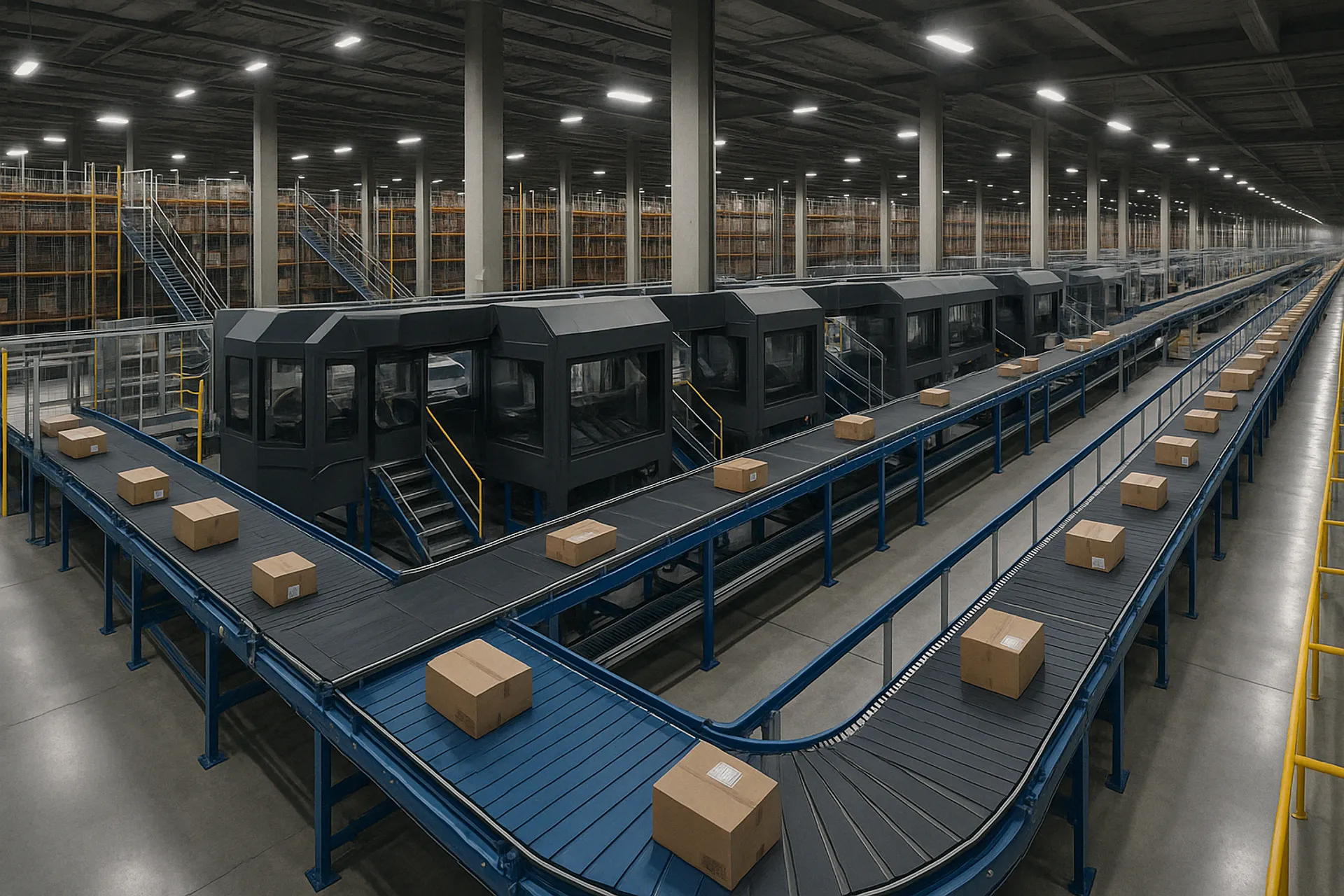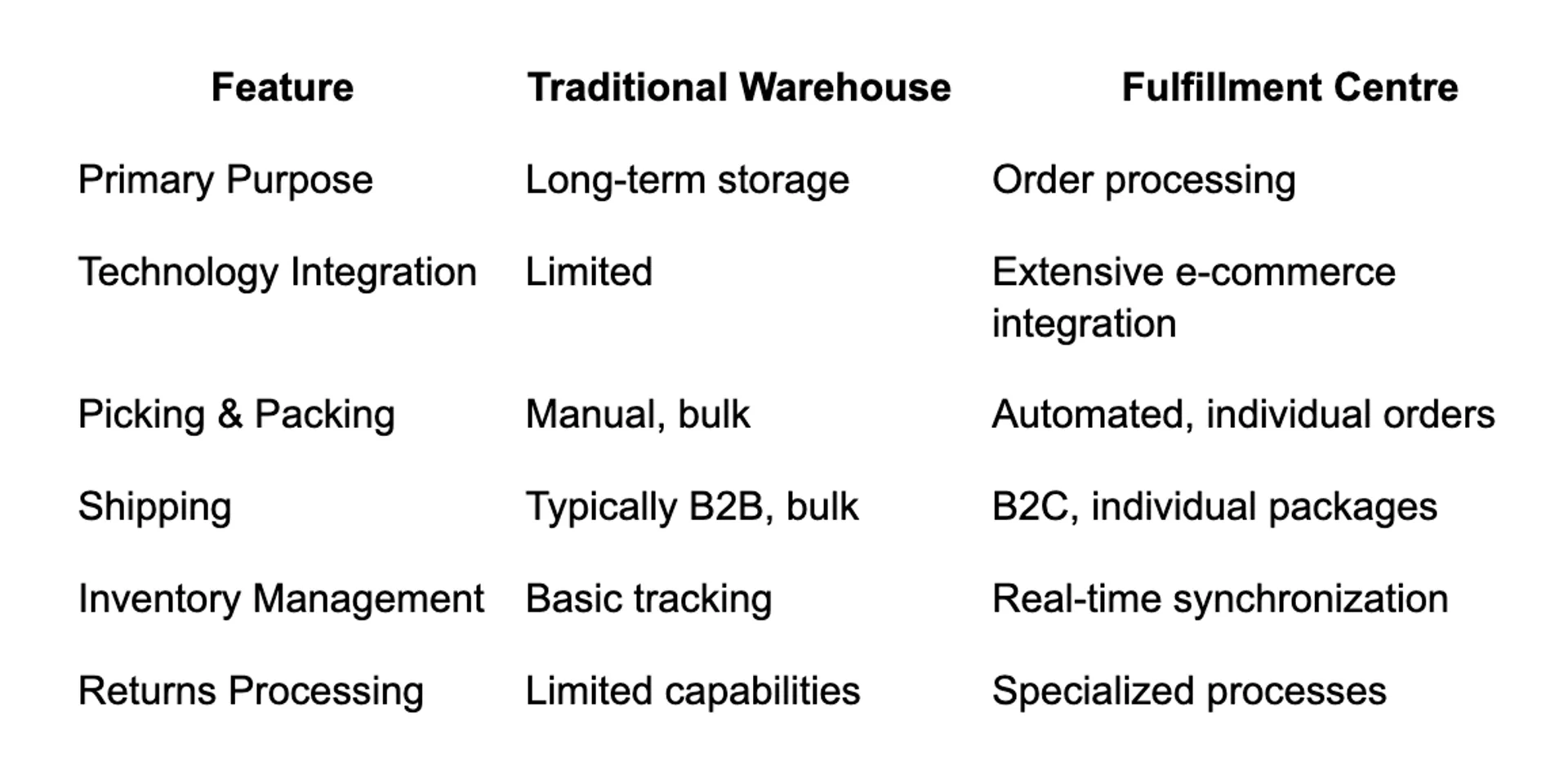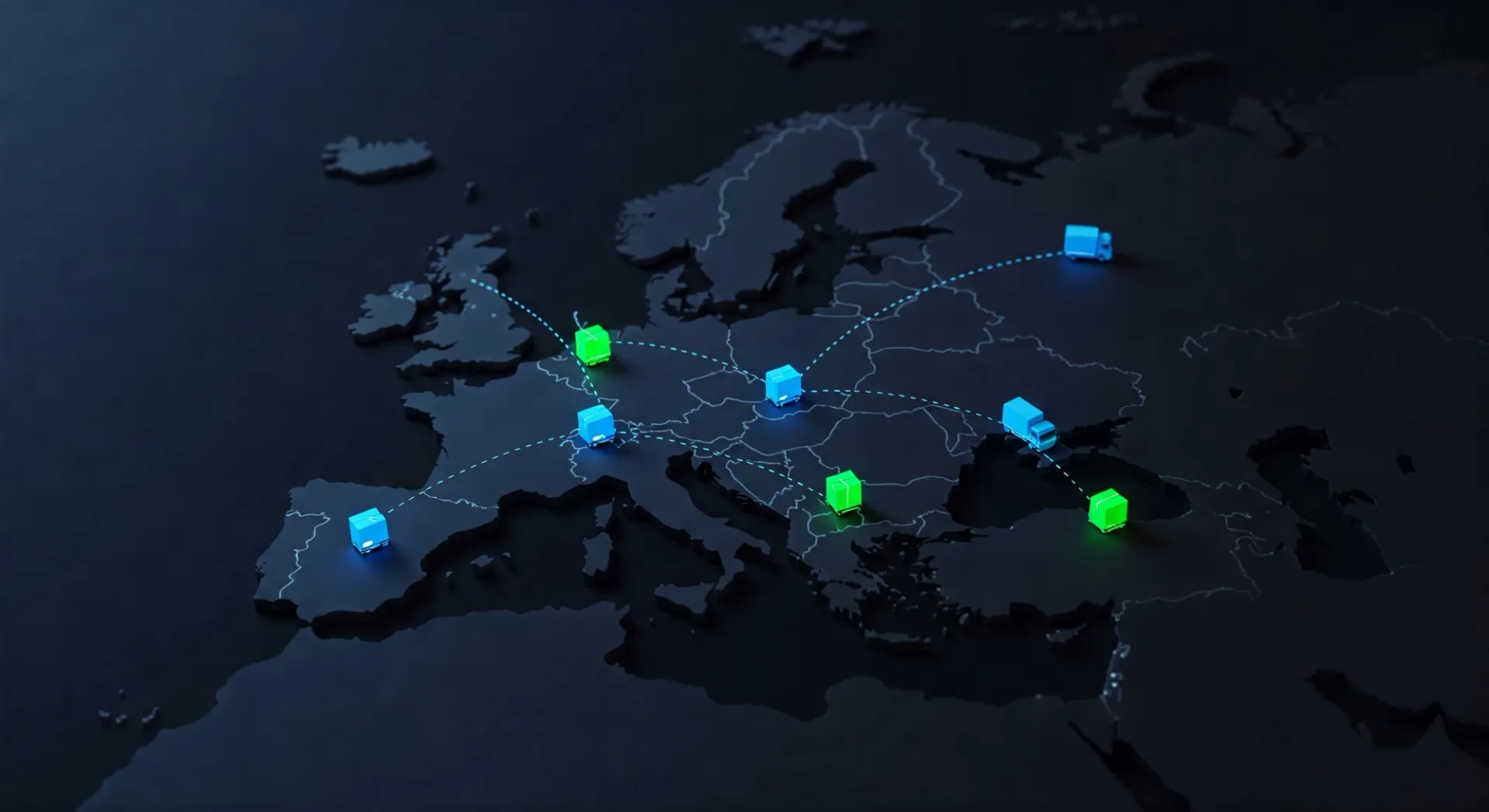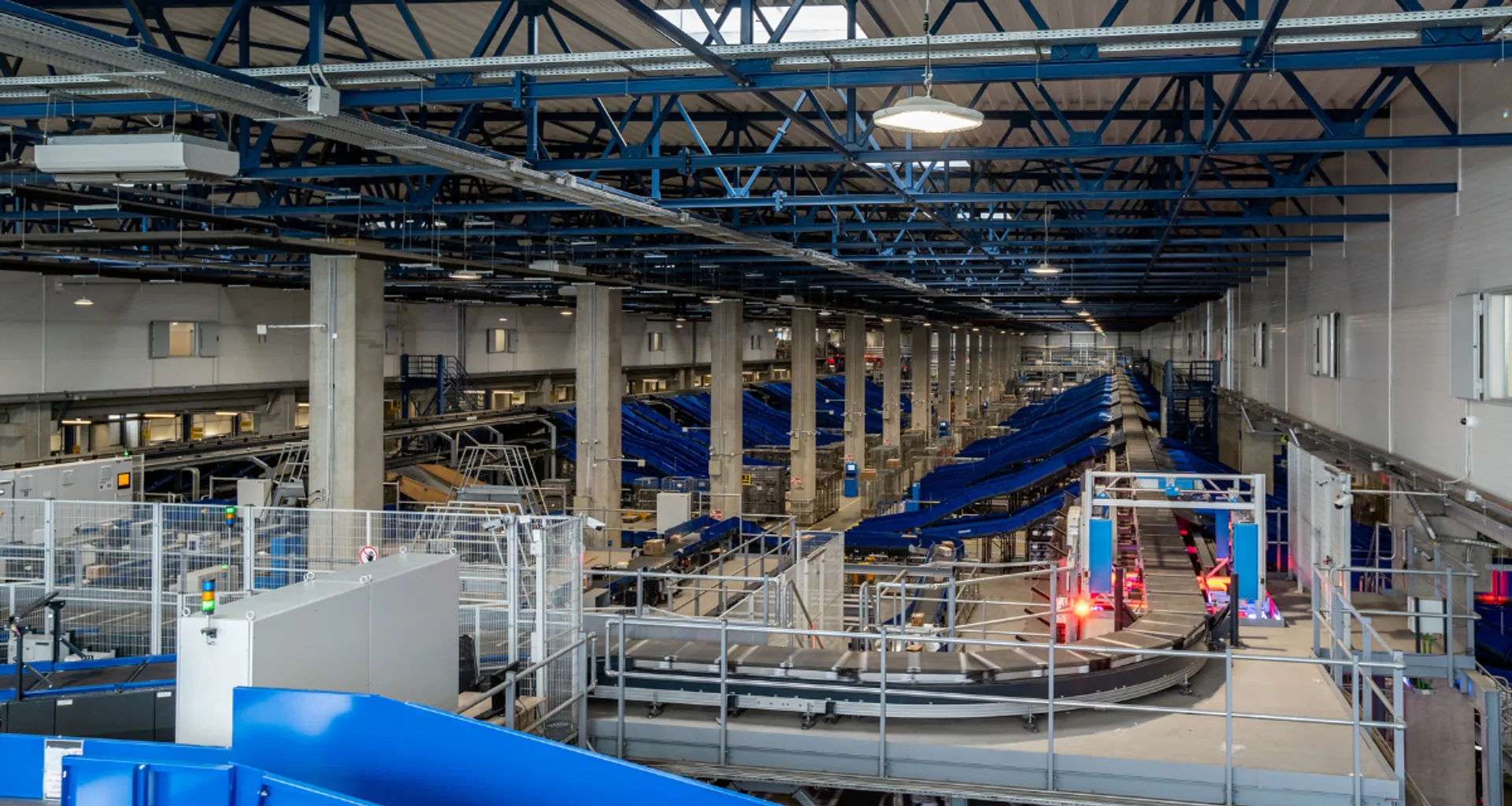I still remember when waiting a week for a package was the norm. Now, if I don't get my order within 48 hours, I'm checking the tracking information every 20 minutes!
This dramatic shift in customer expectations is reshaping the European e-commerce landscape. With giants like Amazon setting the standard for lightning-fast delivery, consumers now expect nothing less than quick, hassle-free shipping – regardless of where they live in Europe.
But here's the thing: behind this seamless experience lies a complex network of warehouses, integration systems, and strategic logistics that makes cross-border e-commerce possible. And for online sellers looking to scale across European markets, understanding this network isn't just helpful – it's essential.
In this guide, we'll dive into everything you need to know about European e-commerce fulfillment, from optimizing your cross-border delivery strategy to choosing the right fulfillment partner. Whether you're shipping packages of under 5kg to 500-1500 customers monthly or scaling your operations, you'll discover how to turn logistics from a headache into a competitive advantage.
Let's unpack the world of European fulfillment together!
What is Cross-Border Fulfillment?
Cross-border fulfillment is the process of storing inventory and shipping products to customers in different countries from your business location. It's the backbone of international e-commerce, allowing merchants to expand their reach beyond domestic markets.
But it's not just about shipping things across borders. Effective cross-border fulfillment encompasses:
- Strategically placed warehousing across multiple countries
- Integration with various e-commerce platforms and marketplaces
- Coordination with local courier services
- Management of country-specific regulations and tax requirements
- Real-time inventory synchronization
As research from eCommerce News Europe indicates, cross-border e-commerce in Europe continues to grow, with consumers increasingly shopping from retailers based in other EU countries.
How Does Cross-Border Fulfillment Work?
The cross-border fulfillment process typically follows these steps:
- Inventory Distribution: Merchants send their products to strategically located warehouses across Europe
- Storage and Management: Products are stored, cataloged, and managed in these fulfillment centers
- Order Processing: When a customer places an order, it's automatically routed to the nearest warehouse
- Picking and Packing: Warehouse staff select the ordered items and package them according to specifications
- Shipping: Orders are handed off to local courier services for delivery
- Tracking and Updates: Customers receive real-time updates on their order status
The beauty of this system is that it allows merchants to deliver products quickly and cost-effectively to customers across Europe, regardless of where the business itself is located.
What are the Three Stages of a Cross-Border Acquisition?
When expanding into cross-border fulfillment, businesses typically go through three distinct stages:
- Exploration Stage: Testing the market with limited inventory in one or two international locations, often using third-party fulfillment services
- Expansion Stage: Increasing inventory across multiple fulfillment centers and optimizing the supply chain for faster delivery
- Establishment Stage: Creating a robust network of fulfillment centers with localized operations, potentially including dedicated staff and customer service
Each stage requires different resources and strategies, but the progression allows businesses to scale their international operations sustainably.
European Warehousing Network: The Key to Next-Day Delivery
Achieving next-day delivery across Europe isn't simply about having faster couriers – it's about strategic warehouse placement. The closer your products are to your customers, the faster they'll receive their orders.
This is where a distributed warehousing network becomes invaluable. By storing inventory in multiple locations across Europe, merchants can:
- Reduce shipping distances
- Cut delivery times
- Lower shipping costs
- Minimize cross-border fees and complications
Frisbo, for example, connects over 35 warehouses across more than 20 European countries, allowing merchants to keep their stock in multiple locations while maintaining real-time inventory synchronization across all sales channels.
What are the Three Types of Fulfillment Centers?
When considering European fulfillment options, it's helpful to understand the three main types of fulfillment centers:
- Traditional Fulfillment Centers: Large warehouses that handle storage, picking, packing, and shipping for multiple merchants
- Integrated E-commerce Fulfillment Centers: Specialized facilities designed specifically for online orders, featuring advanced automation and integration with e-commerce platforms
- Cross-Dock Facilities: Centers that minimize storage time by quickly transferring incoming products to outgoing shipments, ideal for fast-moving items
The right choice depends on your specific needs, order volume, and growth strategy.

What is the Difference Between a Traditional Warehouse and a Fulfillment Centre?
Traditional warehouses and fulfillment centers might seem similar, but they serve distinctly different purposes:

Fulfillment centers are specifically designed to handle the unique requirements of e-commerce operations, with systems optimized for processing individual customer orders quickly and efficiently.
Optimizing Your Cross-Border Delivery Strategy
Developing an effective cross-border delivery strategy requires balancing speed, cost, and customer experience. Here are key factors to consider:
What is Cross-Border Strategy?
A cross-border strategy is your comprehensive plan for expanding e-commerce operations beyond domestic borders. This includes:
- Which markets to enter and when
- How to position your inventory across fulfillment centers
- Which shipping carriers to partner with in each region
- How to handle customs, taxes, and regulatory compliance
- What delivery options to offer customers
The most successful cross-border strategies are flexible enough to adapt to changing market conditions while maintaining consistent customer experience.
How Big is the Cross-Border E-commerce Market?
The European cross-border e-commerce market is substantial and growing rapidly. According to industry reports, cross-border e-commerce in Europe accounts for billions in annual revenue, with countries like Spain seeing impressive growth – €24.6 billion in online turnover in a recent quarter, with 65% of transactions heading outside of Spain.
This momentum creates significant opportunities for online merchants who can efficiently tackle the logistics challenges of serving multiple countries.
What is Cross-Border Delivery?
Cross-border delivery involves shipping products from one country to customers in another. In the European context, this can mean:
- Shipping between EU member states (intra-EU delivery)
- Shipping from EU to non-EU European countries
- Shipping from non-EU locations into the European market
Each scenario comes with different regulatory requirements, customs considerations, and delivery timeframes. By working with a fulfillment network that covers multiple European countries, merchants can often convert complex cross-border deliveries into simpler local deliveries, dramatically improving speed and reducing complications.
Choosing the Right Fulfillment Partner

Finding the right fulfillment partner is arguably the most critical decision for e-commerce businesses expanding across Europe. The ideal partner should offer:
- Strategically located warehouses across your target markets
- Seamless integration with your e-commerce platform
- Real-time inventory management and reporting
- Competitive pricing with transparent fee structures
- Scalability to grow with your business
- Experience with your product category
When evaluating potential partners, consider both current needs and future growth plans. A partner that can support your expansion into new markets will save you the headache of switching providers later.
How Does a Fulfillment Center Work?
A modern fulfillment center operates as a highly coordinated system:
- Receiving: Your inventory arrives at the fulfillment center and is checked for accuracy and quality
- Storage: Products are stored in designated locations, often using strategic placement based on order frequency
- Order Management: When orders come in, they're automatically processed through the warehouse management system
- Picking: Staff or automated systems collect the ordered items from their storage locations
- Packing: Orders are packaged according to specifications, often with custom packing materials
- Shipping: Packages are labeled and handed off to courier services
- Returns Processing: Returned items are received, inspected, and either returned to inventory or disposed of
The best fulfillment centers leverage technology at every step, from barcode scanning and RFID tracking to automated picking systems and real-time reporting.
What is the Difference Between EDI and Traditional System in E-commerce?
Electronic Data Interchange (EDI) represents a significant advancement over traditional e-commerce systems:

EDI systems allow for seamless communication between your e-commerce platform, fulfillment centers, and shipping carriers, dramatically reducing errors and increasing efficiency.
Future Trends in European E-commerce Fulfillment
The e-commerce fulfillment landscape continues to evolve rapidly. Here are some emerging trends to watch:
Smart Logistics and Automation
As Upper Inc's guide on e-commerce fulfillment highlights, smart logistics is revolutionizing the industry. Advancements include:
- AI for Demand Forecasting: Using artificial intelligence to predict inventory needs and optimize stock levels
- Automated Fulfillment: Robots and automated systems for picking and packing
- Real-Time Tracking: Enhanced visibility throughout the supply chain
- Blockchain for Transparency: Improved traceability and security in the supply chain
These technologies are making fulfillment faster, more accurate, and more cost-effective.
Sustainable Fulfillment Practices
Sustainability is becoming increasingly important to both consumers and businesses:
- Eco-friendly packaging solutions
- Optimized delivery routes to reduce carbon emissions
- Energy-efficient warehousing
- Consolidated shipments to minimize environmental impact
Merchants who embrace sustainable fulfillment practices not only reduce their environmental footprint but also appeal to environmentally conscious consumers.
Personalized Delivery Experiences
Customer expectations continue to rise, driving demand for more personalized delivery options:
- Precise delivery time slots
- Alternative delivery locations (lockers, pickup points)
- Customized unboxing experiences
- Real-time communication preferences
The most successful e-commerce businesses are those that turn delivery into a positive brand experience rather than just a functional necessity.
Frequently Asked Questions
What is CBP in Logistics?
In logistics, CBP typically refers to Customs and Border Protection, which regulates the flow of goods across international borders. In the European context, this involves ensuring compliance with EU customs regulations and individual country requirements for imports and exports.
What is Cross Border Processing?
Cross-border processing involves handling the various administrative and regulatory requirements when goods move between countries. This includes:
- Customs clearance
- Tax calculations (VAT, duties, etc.)
- Compliance with import/export regulations
- Documentation preparation
- Coordination with customs brokers and authorities
Effective cross-border processing minimizes delays and ensures smooth movement of goods across international boundaries.
What is an Example of a Cross-Border Exchange?
A practical example of cross-border exchange in e-commerce might look like this:
A German consumer purchases clothing from a French online retailer. The retailer uses a fulfillment network with warehouses across Europe. The order is automatically routed to their Polish fulfillment center, which has the items in stock. The order is picked, packed, and handed to a local courier service, which delivers it to the German customer within 24 hours, without any visible cross-border complications for the customer.
This seamless experience is possible because the retailer has strategically positioned inventory and partnered with a fulfillment provider that handles all cross-border complexities.
Conclusion: Future-Proofing Your E-commerce Business with Smart Logistics
The European e-commerce landscape is evolving rapidly, with consumer expectations for speed and convenience continuing to rise. To stay competitive, merchants must embrace smart logistics solutions that enable them to deliver quickly and efficiently across borders.
By partnering with the right fulfillment network, you can transform logistics from a challenging necessity into a strategic advantage. You'll gain the ability to:
- Deliver next-day anywhere in Europe
- Keep your stock in multiple locations
- Sync inventory across multiple sales channels
- Access local courier services in each market
- Free up time to focus on growing your business
Remember, in e-commerce, logistics isn't just about moving products – it's about creating exceptional customer experiences that drive loyalty and growth.
Ready to take your e-commerce business to the next level with smart fulfillment solutions? Get in touch with us today to discover how our network of over 35 warehouses across more than 20 European countries can help you deliver faster, more efficiently, and with less hassle.




